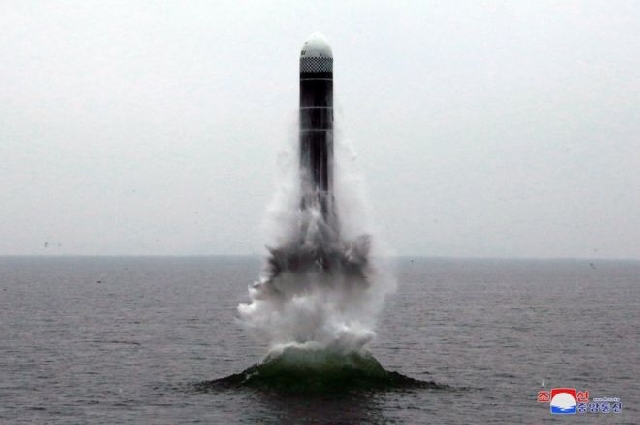'Grave moment' as North tests missile fired from sea
 missile
missile
North Korea has confirmed it test-fired a new type of a ballistic missile, a significant escalation from the short-range tests it has conducted since May.
The missile - which was able to carry a nuclear weapon - was the North's 11th test this year.
But this one, fired from a platform at sea, was capable of being launched from a submarine.
Being submarine-capable is important as it means North Korea could launch missiles far outside its territory.
According to South Korean officials, the missile flew about 450km (280 miles) and reached an altitude of 910km before landing in the sea.
That means the missile flew twice as high as the International Space Station, but previous North Korean tests have gone higher.
It came down in the Sea of Japan, also known in South Korea as the East Sea. Japan said it landed in its exclusive economic zone - a band of 200km around Japanese territory.
The test came hours after North Korea said nuclear talks with the US would resume.
What do we know about this missile?The missile was launched from the sea soon after 07:00 on Wednesday (22:00 GMT Tuesday), about 17km north-east of the coastal city of Wonsan.
North Korea's state news agency KCNA said on Thursday the missile was a Pukguksong-3 test-fired at a high angle, designed to "contain external threat and bolster self-defence".
It added there was "no adverse impact on the security of neighbouring countries".
Unlike previous tests, there were no pictures of North Korean leader Kim Jong-un at the launch.
In the previous 10 missile tests carried out this year, only short-range projectiles were fired.
Why is 'submarine-capable' significant?If the missile was launched on a standard trajectory, instead of a vertical one, it could have travelled around 1,900 km (1,200 miles). That would have put all of South Korea and Japan within range.
But being launched from a submarine can make missiles harder to detect, and allows them to get closer to other targets.
North Korea's existing Romeo-class submarines, which were built in the 1990s, are believed to have a range of about 7,000 km, the Reuters news agency said.
This would make a one-way trip to near Hawaii possible.
The north's submarines are, however, diesel-powered - which makes them noisier and easier to detect.
Source: BBC
Trending News

Judgment day for former MASLOC boss, others today
11:14
UEW distance education students call for MoE’s intervention over graduation requirement dispute
02:40
Akufo-Addo commissions Kumasi Thermal Power Plant and Genser Energy Kumasi Pipeline
06:27
Sign Ghana National Service Authority Bill into law – NSS begs Akufo-Addo
10:53
MoH receives first batch of donated medical supplies after a year-long port delay
02:51
PAC orders East Gonja Municipal Assembly to pay contractor GHS92,704 with interest
06:09
Geopolitics split African states’ response to Iran-Israel tension
10:37
Jefferson Sackey advocates peace and tolerance at Eid-ul-Fitr celebration
02:04
Lack of public purse protection ‘pathetic’ – Sam Jonah calls out ‘weaponisation of state agencies against opponents, assault on press freedom'
04:02
Gov’t releases ₵26m to institutional suppliers
11:52



